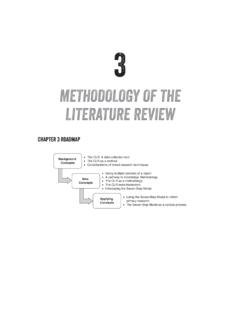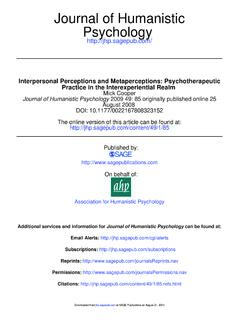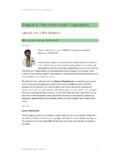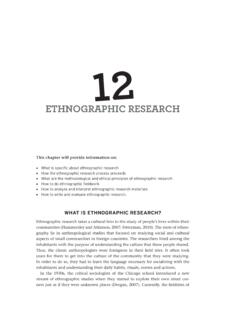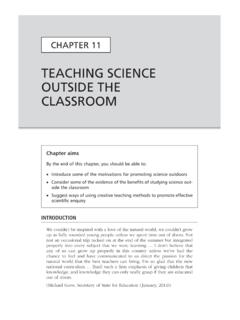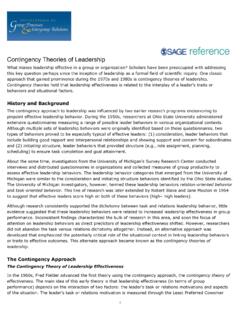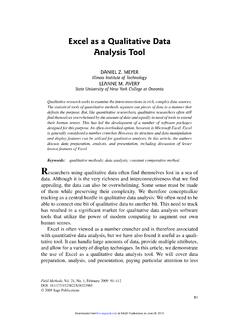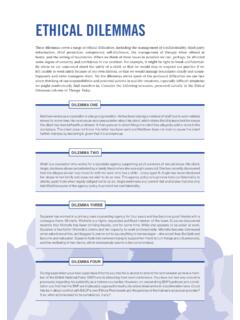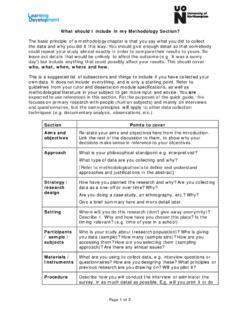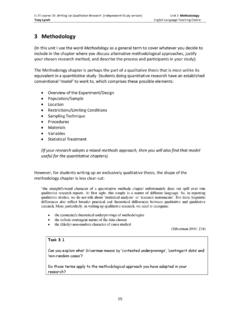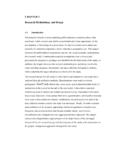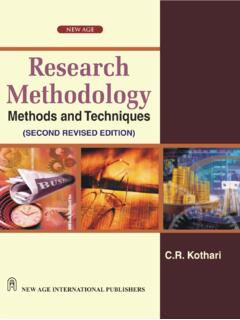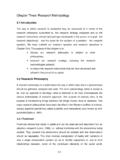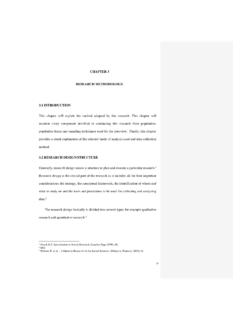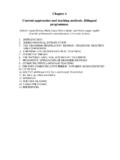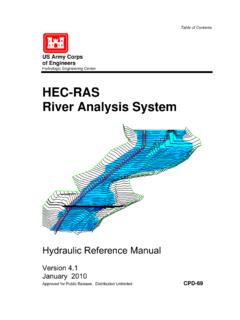Transcription of INTRODUCTION TO QUALITATIVE DATA
1 INTRODUCTION TO QUALITATIVE DATAThis chapter will provide information on: the nature of QUALITATIVE research data ways of collecting the data what kinds of QUALITATIVE data exist some key COUNTS AS QUALITATIVE DATA?The book has so far introduced you to the key aspects of QUALITATIVE research in business studies. Both Research Philosophy ( chapter 2) and Research Design and Process ( chapter 3) have underlined the importance of consistency in research. The idea of research, planning phases, and the processes related to the data planning and gathering, and the possibilities you will have with different research methods all relate to the ways you know your topic and your data. This chapter will highlight some general aspects that relate to data gathering, irrespective of the method chosen for the analysis of the data.
2 The chapter will also guide you through a few easy exercises that show you the potentiality of your business researchers collect empirical data for their research projects and use various types of data collection methods for this purpose. Each of the data 707_Eriksson_Kovalainen_Ch 07 Part 8120-Oct-15 4:32:10 PM QUALITATIVE METHODS IN BUSINESS RESEARCH82collection methods requires some specific knowledge and skills that you can learn by studying, experimenting, rehearsing, and by reflecting on your aims and prac-tices in collecting the data for your study . Also here, the general purpose of your research, the research approach you choose, and your research questions should be the guiding lights in terms of deciding what kind of empirical data are most useful in your study .
3 The circularity of the process, as described in chapter 3, emphasizes the fact that you may modify your decisions regarding the data and selection you may already have, and you can gather additional data, in order to finalize your research in the methodology textbooks, empirical data collected by researchers themselves are often called primary data. The division between primary data and secondary data relates to the slightly arbitrary division between the researcher-designed and researcher-gathered data, and between prior existing data in sources such as data archives, libraries, etc. Researchers can collect empirical data for their research project by interviewing and observing and by asking the participants to write ( diaries, stories), draw, or present in some other way ( drama).
4 This would be considered as primary data that already exists somewhere are commonly called secondary data. These include both textual data that exist without any specific collecting activities ( documents, histories, newspapers, diaries, memos, stories) and visual materials ( video recordings, television programmes, movies). In QUALITATIVE research, these types of materials can also be called naturally occurring materials ( Silverman, 2011) because they exist irrespective of the researcher s actions and this chapter we will give a general overview of the ways to collect different types of QUALITATIVE data that are commonly available for business researchers. This chapter aims to shortly introduce you to how to collect various types of data, and you can find more detailed information on how to analyze data from the viewpoint of different methodological approaches in Chapters 11 20.
5 You will find a more detailed description on QUALITATIVE interviews and observations in chapter 8, on digital materials in chapter 9, and on ways to learn to know your data in chapter 10. INTRODUCING DIFFERENT TYPES OF QUALITATIVE DATAQ ualitative data (or research material, as some methodology books call it) are varied: there is not just one type of QUALITATIVE data. A usual way to define QUALITATIVE data is to contrast it with quantitative data and define it through differences: QUALITATIVE data is any information that can be captured that is not numerical in nature, that is, not measurable data. Hence, often the divide between numbers and words is seen as a difference. But even words can be quantified and counted, and their frequency, presence or absence may allow for interpretations.
6 Thus the division is not clear-cut. 07_Eriksson_Kovalainen_Ch 07 Part 8220-Oct-15 4:32:10 PMINTRODUCTION TO QUALITATIVE DATA 83 One common feature for QUALITATIVE data is that it is either the textual, verbal, audio material or visual material that allows for interpretations and descriptions and does not focus on measurements. Even quantitative research uses QUALITATIVE data, and the definition there often follows the definition given in statistics for QUALITATIVE data: data collected about a categorical variable is should be clear though that for any data, the importance of interpretation and the analysis of the data are crucial. Your research question should give you possibil-ities and indicate directions for recognizing the possible data sources, obtaining the data and thinking of possible alternatives, if your original plan for data gathering fails.
7 The great thing about QUALITATIVE research design is that the research design is seldom built on one data source interviews and are different types of data available and depending on your research questions and methods chosen for the analysis, the data may be treated similarly or differently in the analysis. We can distinguish interviews, observations, texts, documents and other written materials, visual materials and even digital materials from each other, as they are differently acquired and require different types of data-gathering strategies. However, the analysis does not necessarily differentiate the data in a similar manner. Within each of these (interviews, observations, textual materials, visual materials, dig-ital materials) there are differing categorizations and classifications for the materials, different ways to acquire data and procedures for the analysis.
8 Therefore, throughout the book we encourage you to take exercises and practice the use of different data in your research often interviews are thought of as being QUALITATIVE material, and sometimes even exclusively introduced as the only QUALITATIVE research material. It is indeed the case that in the interview society (Gubrium and Holstein, 2001; Silverman, 2013), interviews are used extensively by the mass media and professional services (consulting, counselling, therapy) as well as by practical and academic researchers. The popularity of interviews in QUALITATIVE research is overwhelming. Therefore, a good number of textbooks and book chapters are available for a novice researcher who plans to conduct interviews in their research project ( Spradley, 1979; Fontana and Frey, 2000; Gubrium and Holstein, 2001; Wengraf, 2001).
9 We will discuss interviews in a more extensive manner in chapter general, interviews consist of talks organized into a series of questions and answers. QUALITATIVE interviews may also resemble open, everyday conversations, in which the distinction between the interviewer and the interviewee is not so evident, the materials and issues dealt with throughout the interviews are not so organized, they do not follow each other chronologically and are more or less quite 07 Part 8320-Oct-15 4:32:10 PM QUALITATIVE METHODS IN BUSINESS RESEARCH84 Interviews most often take place face to face, but they can also take place over the telephone, or online using computer-mediated technologies (see chapter 9). Most interviews are conducted between two people (the interviewer and the interviewee or the participant), but interviews made in groups of two or more participants are also common in business studies (see chapter 14 on Focus Group Research).
10 QUALITATIVE interviews, as used in scholarly research, are research vehicles, the pur-pose of which is to produce empirical materials for the study in question. In contrast to how you conduct everyday conversations with fellow students, teachers or busi-ness managers, a good QUALITATIVE interviewer most often prepares at least some of their questions in advance, and later analyzes and reports results in a specific way. The interviewer also focuses the interview on particular issues that are related to the topic and research questions of their study . Although you might think that QUALITATIVE interviews are easy to do, they are not. In chapter 8 you will find exam-ples of how to distinguish research questions from interview questions and how to organize your interviews for the analysis.

